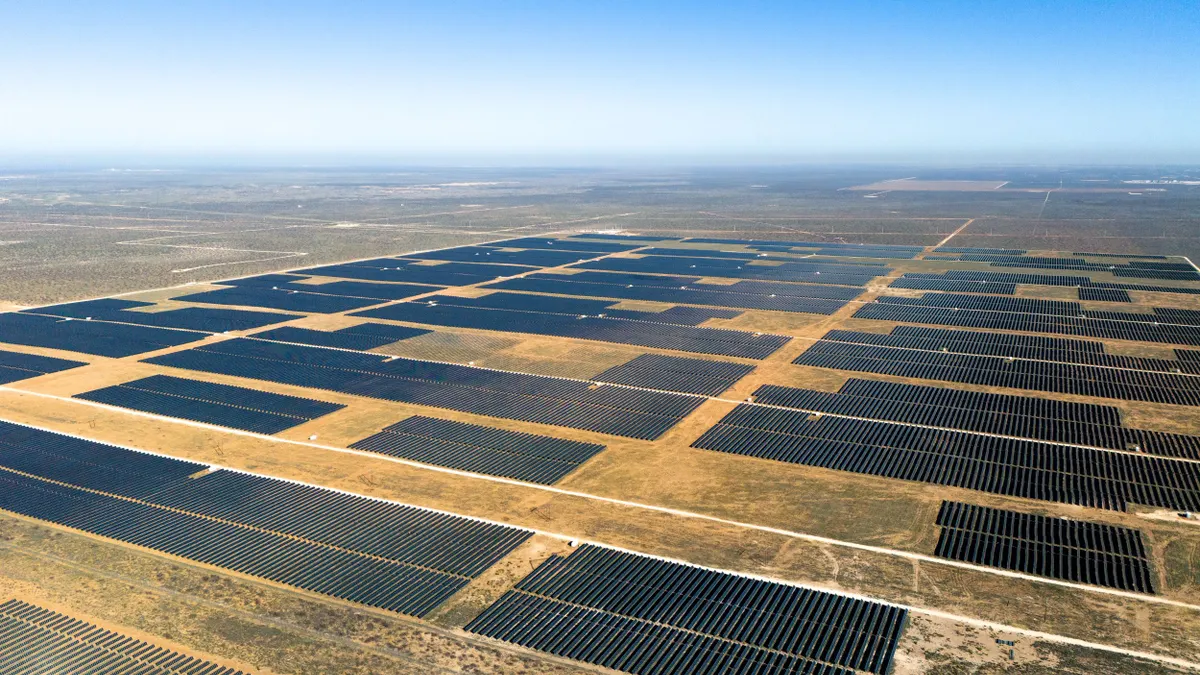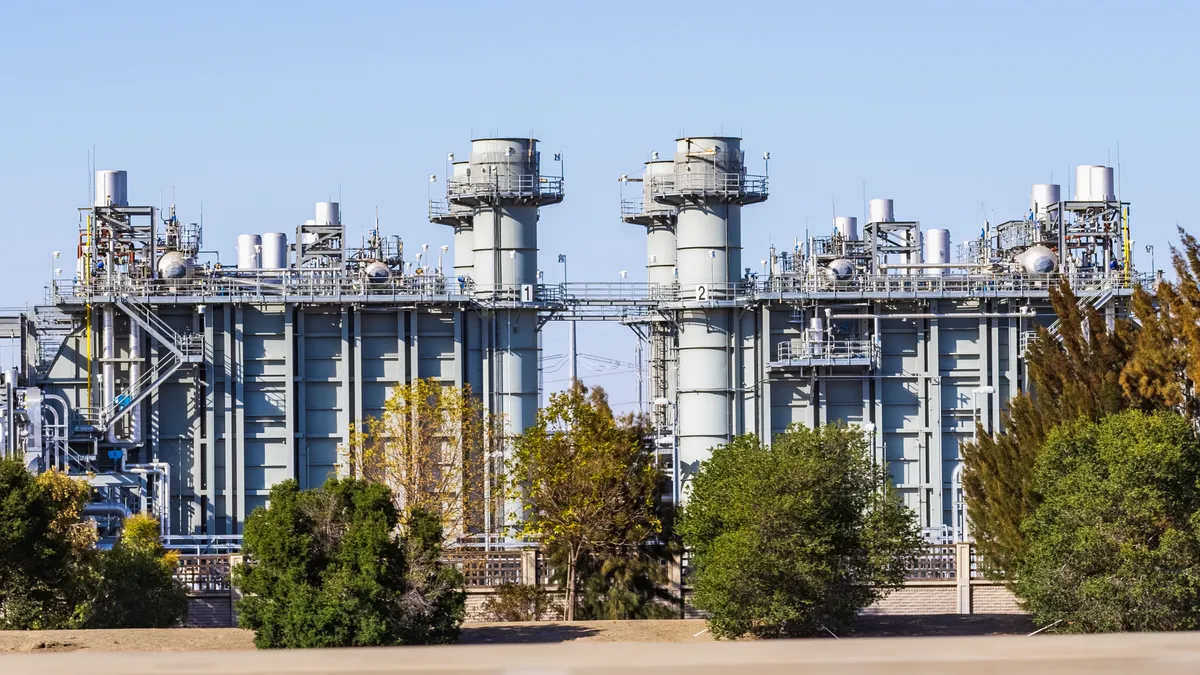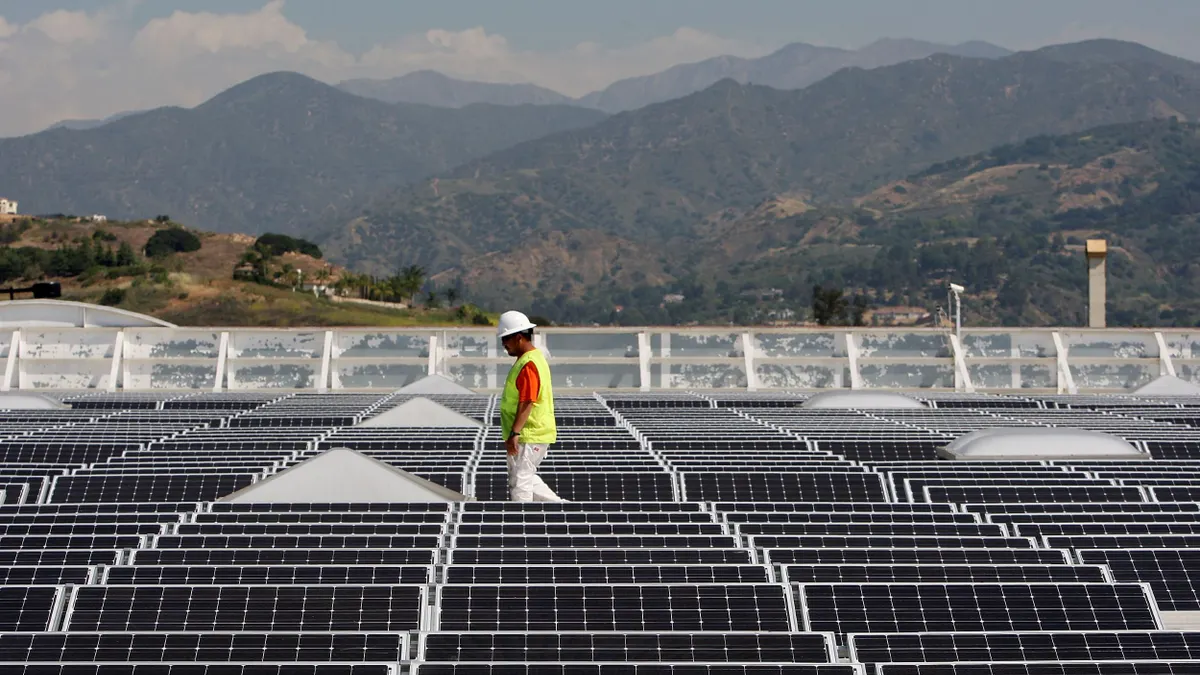Despite two recent high-profile denials, power sector merger and acquisition activity is likely to remain brisk, though likely behind the pace seen last year, analysts say.
Kansas regulators earlier this month, in a unanimous vote, rejected the proposed $12.2 billion acquisition of Westar Energy by Great Plains Energy. In their rejection, the regulators cited the utility’s refusal to accept "any significant safeguards that would protect consumers."
Earlier in the month, regulators in Texas rejected NextEra Energy’s $18.4 billion bid to acquire Oncor Electric Delivery. As in Kansas, the Texas regulators cited a need for more consumer protections be built into the deal.
“Those denials do not necessarily represent a trend,” said Kenyon Willhoit, a director at consulting firm PwC. Buy-side dealmakers often look for cost savings, or synergies, as do regulators who like to see cost savings flow back to ratepayers in the form of lower rates. But “sometimes those synergies are difficult to quantify,” Willhoit said.
Looking forward, Willhoit says it could be difficult to replicate last year’s robust deal market this year. 2016 saw the highest level of M&A activity in the past several years, with a total deal value of $126 billion, according to PwC. Last year was also a good year for mega deals. PwC tallied 21 deals valued at $1 billion or more in 2016.
So far this year, M&A activity has been stronger in the first quarter than in the fourth quarter but was down significantly compared with first-quarter 2016, according to a new report from PwC.
Deal value during the quarter was driven by large corporate deals, which accounted for $9.1 billion or 71% of total deal value, with most of that value in one deal — AltaGas’ proposed $6.6 billion acquisition of WGL Holdings.
The other big corporate deal of the quarter was an agreement by AES Corp., Alberta Investment Management Corp. and other investors to acquire utility-scale solar power company Sustainable Power Group from Fir Tree Partners for $853 million in cash and the assumption of $724 million in non-recourse debt.
But overall there were fewer large deals, both quarter-to-quarter and year-over-year. There were twice as many large deals in fourth-quarter 2016 as there were in the first quarter, and in first quarter of 2016 there seven large deals were announced compared with first-quarter 2017’s two mega deals.
“We might not see the same level of deals in 2017, but we will likely see the same types of deal, the same themes will be at play,” said Willhoit. With the large volume of deals in 2016, many companies are going to be more focused on integrating completed acquisitions than on looking for new deals.
Otherwise, Willhoit says, the major trends that will continue to drive the M&A market in 2017 are infrastructure and inbound investment.
The makeup of the U.S. power sector is changing, he said. Gas-fired generation and renewable resources are playing an ever greater role, and they require infrastructure, such as natural gas pipelines and new transmission lines, to supply fuel or transmission wires to move power to load centers. And for acquiring companies, infrastructure assets provide an avenue for growth.
Willhoit also noted that the largest announced deal in the first quarter, AltaGas’ proposed takeover of WGL Holdings, represents a trend likely to continue to unfold throughout the year as Canadian companies continue to look to the U.S. for investment opportunities.
Inbound deals represented $7.2 billion or 56% of total deal value in the first quarter, according to PwC.
Looking forward, Willhoit says PwC will be keeping a close eye on three factors in 2017: the potential for higher interest rates, which can widen bid-ask spreads for deals, pending tax reform, and changes in regulatory policies, especially environmental policies.
On the environmental front, the planned phase-out of the production tax credit and the investment tax credit for wind and solar power will continue to provide an impetus for M&A deals, Willhoit said, as dealmakers look to expand their renewable portfolios before the tax breaks go away.
A new paradigm
Analyst Julien Dumoulin-Smith at UBS sees some of those same themes playing out in 2017, but with a different twist. In a recent report, he wrote that a new M&A paradigm may be emerging for utilities.
Many larger utilities have already leveraged their balance sheets to the point where it has become more difficult for them to pay a meaningful acquisition premium and still maintain an investment grade rating, said Dumoulin-Smith. That was a key concern for regulators in both Kansas and Missouri in their rejection of the Westar-Great Plains deal. And without the ability to leverage a deal, acquirers could be hard pressed to pay a premium for a target company.
In an environment in which the ability to pay a premium is combined with heightened regulatory concerns about leverage, Dumoulin-Smith sees M&A activity shifting from the traditional format in which a large companies buy smaller ones to a scenario where there are more mergers of equals. While individual deals may not be as large, a merger of equals trend could actually expand the number of potential deals, he said.
But there is still one other potential damper on M&A deals in 2017: uncertainty regarding tax policies. Some of the tax reforms being prepared by Congress and the Trump administration include measures that would eliminate the deductibility of interest expense. That could reduce dealmakers’ appetite to engage in leveraged deals and slow the trend toward consolidation. Additionally any deals done while the tax code is in flux could be done with reduced leverage and, possibly, smaller premiums.
The silver lining of that threat fits in with one of PwC’s trends. Canadian bidders could be emboldened by the competitive advantage they would have if U.S. bidders were barred from deducing interest costs, said Dumoulin-Smith. For Canadians, a U.S. acquisition would confer growth opportunity and regulatory diversity.
Dumoulin-Smith sees a continued trend away from merchant power in the form of merchant asset divestment. In that respect, he says the Northeast and Mid-Atlantic states provide the best prospects for M&A deals.





















